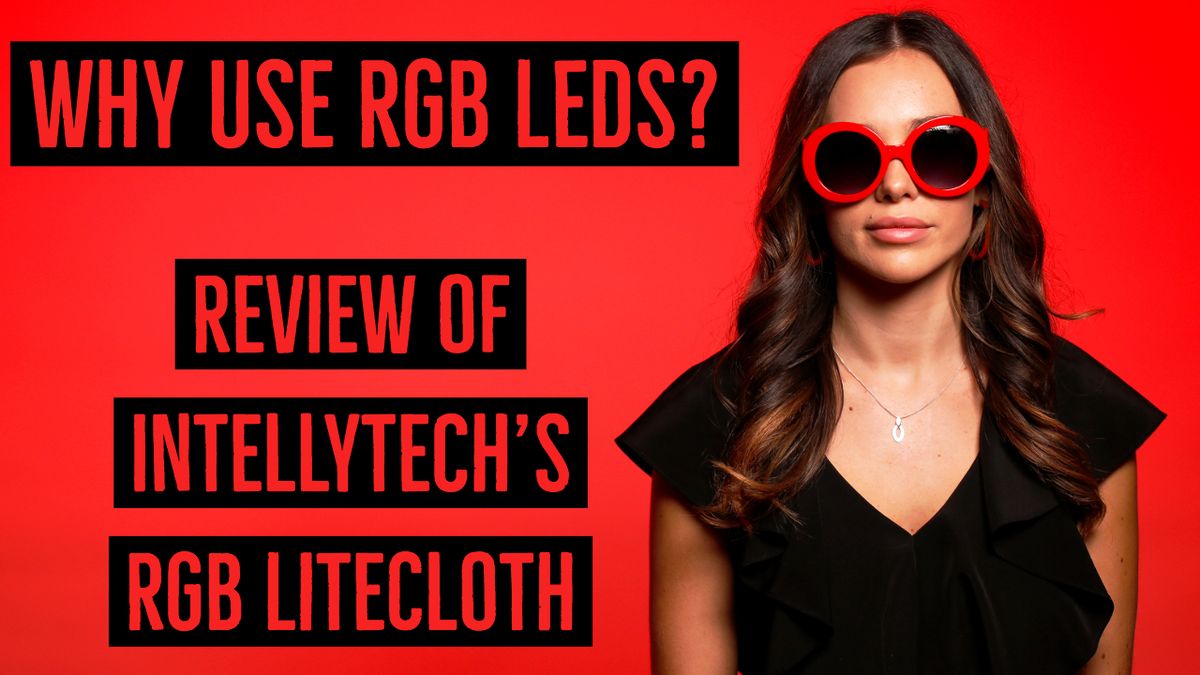
Hi, this is Jay P! Today, we’re going to be reviewing Intellytech’s new RGB 2’x2′ Litecloth. The future of lighting seems to be heading toward RGB. Why is that? Well, because you can choose whatever color you want quickly and easily without having to use gels or extra equipment.
Say, if you’re in a situation where your lighting is set for fluorescent at 3,800K and you think it looks a little too green, you can fine-tune your color and add a small amount of magenta to balance it out. You still have your color temperature settings for anywhere from tungsten (1,000K) to daylight (10,000K). But now with an affordable, low profile, and easy to use product like Intellytech’s RGB Litecloth, you can add color correction to that temperature.
We’ll be looking at Intellytech’s single light version, the LiteCloth LC-160RGBW – 2’x2’ for $1,599.00.
The assembly comes with a plastic case, and in it you’ll find: a grid, diffusion cover, softbox, and the 2’x2’ light panel, the skeleton that holds the light panel, a control box, and the ballast. Last of all, the RGBW Wireless Remote *LC-WR3 can be purchased for $99.00.
The control box has an Anton Bauer battery plate to get it V-mounted, but they also send a plate that goes around your ballast that allows you to attach your control box to it so they can be hung to your light stand as one.
The Control Panel
So, now we’ll look at how to use the control panel. There are four buttons across the middle of the control panel: color temperature (CCT(K)), dimmer, channel, and preset.
First, we’ll turn it on and then adjust the power. To do that, we’ll select the 2nd of four buttons across the middle of the control panel to adjust our dimmer in order to not blow out our overhead camera. Then, we’ll adjust the color temperature anywhere from 9,999K to 3,000K.
Now, if I want to get rid of the color temperature and use solid colors, I’ll dial the dimmer back to 0% and select one or more of the three vertical RGB buttons along the left side of the control panel. You can choose to amplify one color, or mix multiple colors to produce new ones, such as green and red to make yellow.
If you click on the selection wheel, you’ll see the “S” next to the value for a given color change to an “F”. “S” stands for slow and “F” for fast. With slow, you’ll scroll through the values one number at a time, and with fast it is ten at a time.
For RGB color combinations: red and green is yellow, red and blue is magenta, green and blue is cyan, and all three colors together is white light. You can also get back to white light by going back to the color temperature and setting it to 9,999K.
Presets
When selecting the preset button, there are nine default channels that are each RGB color and different combinations of them.
To pair the remote with the control panel, you must match the “DMX channel” number on the control panel to the same number on the remote, and we chose #1. From there, you can make any selection on the remote that you can on the control panel.
My Thoughts
Now I’ll share with you what I love about this light. First off, it’s super low profile and I can’t emphasize that enough. It doesn’t draw a lot of power, and the softbox is very small but still allows you to attach a grid to control the light.
Check Out Jay P’s Gear @ B&H: https://bhpho.to/2ES90Eb
To view the video, click here
Enter our December Giveaway: theslantedlens.com/give
